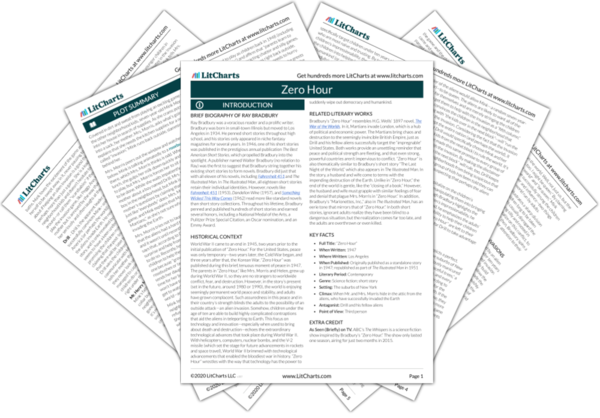Bradbury’s “Zero Hour” resembles H.G. Wells’ 1897 novel,
The War of the Worlds. In it, Martians invade London, which is a hub of political and economic power. The Martians bring chaos and destruction to the seemingly invincible British Empire, just as Drill and his fellow aliens successfully target the “impregnable” United States. Both works provide an unsettling reminder that peace and political strength are fleeting, and that even strong, powerful countries aren’t impervious to conflict. “Zero Hour” is also thematically similar to Bradbury’s short story “The Last Night of the World,” which also appears in
The Illustrated Man. In the story, a husband and wife come to terms with the impending destruction of the Earth. Unlike in “Zero Hour,” the end of the world is gentle, like the “closing of a book.” However, the husband and wife must grapple with similar feelings of fear and denial that plague Mrs. Morris in “Zero Hour.” In addition, Bradbury’s “Marionettes, Inc.,” also in
The Illustrated Man, has an eerie tone that mirrors that of “Zero Hour.” In both short stories, ignorant adults realize they have been blind to a dangerous situation, but the realization comes far too late, and the adults are overthrown or even killed.
